If you’re a homeowner, there are countless facets of your property that need to be taken into consideration in order to keep it safe and comfortable. One major component that requires care and attention is the sump pump basin in your basement or crawl space. While not all homes have one, these basins serve an essential purpose by protecting against floods and other water-related disasters. In this article, we’ll explore what a sump pump basin is, why you should consider installing one on your property if possible, and how best to maintain it over time. With this knowledge, you’ll be well-equipped to handle any potential water issues that arise with confidence!
What Is a Sump Pump Basin?
A sump pump basin, also known as a “sump pit,” is a hole that is dug into the ground in a basement or crawl space of a building. Sump pump basins are installed to collect and temporarily store excess water which may accumulate in the surrounding soil or moisture that seeps into the space during heavy rain or snow. This excess water can cause serious damage to the foundation, walls, and floors of the building, leading to costly repairs and maintenance.
Sump pump basins are usually designed to be about 18 inches in diameter and two-to-three feet deep. They are typically lined with a plastic or concrete material to prevent water from seeping into the surrounding soil and causing further damage to the building’s foundation. A sump pump is installed in the basin to remove the excess water and discharge it safely through a pipe away from the building.
Sump pump basins are an essential component of many homes and buildings–especially those located in areas with a high water table or frequent precipitation. They are often found in basements, crawl spaces, and other areas prone to flooding. Sump pumps and basins are also commonly used in industrial settings to help prevent damage to machinery and equipment from water damage.
It is important to ensure that sump pump basins are correctly installed and maintained to ensure optimal performance. Regular cleaning and inspection of the basin and pump can help prevent malfunctions and extend the system’s life. In addition, it’s crucial to choose the right size and type of sump pump to ensure that it can handle the amount of water which may accumulate in the basin during events of heavy rain or snow.
What Is a Sump Pump and How Does It Work?
A sump pump is an essential piece of equipment for keeping a basement or crawl space dry. It pumps water out of the sump basin and into a designated drainage area. A sump pump is typically installed in the lowest part of a basement or crawl space, where it can collect any water that seeps in through cracks in the foundation or other sources.
When the water level in the sump pit reaches a certain level, a float switch activates the sump pump. Once the pump is activated, it then uses an impeller to push the water up through a discharge pipe and out of the house. Most sump pumps are powered by electricity, though some homeowners use battery-powered backup systems to keep the pump running in case of power outages.
Two Types of Sump Pumps: Pedestal and Submersible
There are two main types of sump pumps: pedestal pumps and submersible pumps. Pedestal pumps have a motor that sits above the sump pit and an impeller at the bottom of the pit. Submersible pumps, on the other hand, are completely submerged in the water, which makes them more efficient and less noticeable.
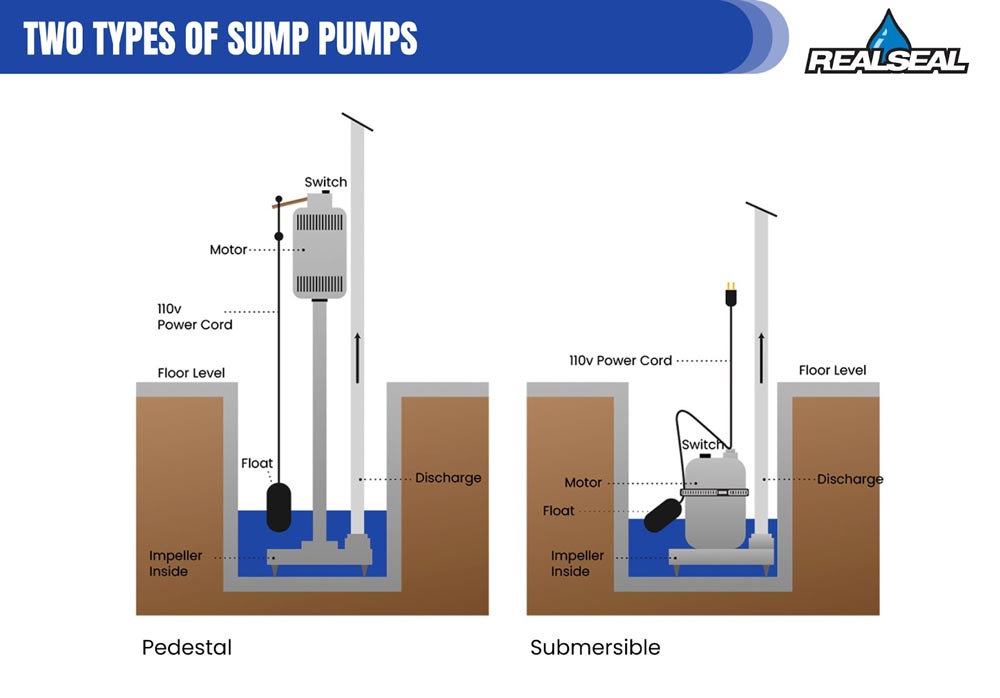
Sump pumps are an essential tool for preventing basement flooding and protecting your home from water damage. They should be tested regularly to make sure they are functioning correctly, and should be replaced every 5-7 years to ensure optimal performance. With the proper setup and maintenance, a sump pump can provide a reliable and effective solution for preventing basement flooding and keeping your home safe and dry.
For more information, see our article Do You Need a Sump Pump for Yard Discharge?
Choosing the Right Sump Pump
As a homeowner, choosing the right sump pump is crucial to ensuring that your basement or crawlspace remains dry and free from water damage. When it comes to selecting a sump pump, there are a few key factors you should consider:
- Sump pump size – First and foremost, you’ll need to determine the size of your sump pump. This is important because it will dictate the horsepower and flow rate of the pump you choose. Generally speaking, the larger the pit, the more powerful the pump must be to remove water adequately.
- Type of float switch – Next, you’ll want to consider what kind of float switch you prefer. These switches are responsible for turning the pump on and off as the water level in the pit rises and falls. There are two main types of float switches available: tethered and vertical. We recommend vertical because the float is less likely to get caught and malfunction.
- Materials used – It’s also important to pay attention to the materials used to construct the sump pump. You’ll want to look for a pump made of high-quality, durable materials that are resistant to corrosion and other types of damage. Cast iron and stainless steel are popular choices for sump pumps thanks to their ability to withstand harsh conditions.
- Battery backup system – Finally, consider whether you want a battery backup system for your sump pump. This is especially important if you live in an area that is prone to power outages or your sump pump is critical to preventing water damage in your home. Battery backup systems provide an additional layer of protection if your primary pump fails or loses power.
How Much Does a Sump Pump Cost?
Sump pump costs depend on various factors like horsepower, type, installation, and labor charges–generally, the price ranges from $500 to $2,000. The basic sump pump model costs around $500-$650, including installation, while a high-end, heavy-duty model may cost about $750-$2,000 or more.
The type of sump pump is also a factor in pricing. Submersible sump pumps are more expensive than pedestal pumps. The power supply source–either battery-operated or electrically powered–also affects the cost. Installing a backup system for the sump pump can cost from $1400 to $2500. Consider the cost of maintenance, too. It’s essential to keep your sump pump operating efficiently, and you need to factor in maintenance costs when purchasing one.
While the cost of a sump pump installation may seem high, it’s important to consider the benefits. A sump pump will help protect your home from water damage, saving you thousands of dollars in costly repairs. Additionally, a sump pump adds value to your home, making it a worthwhile investment.
What Causes a Sump Pump to Fail?
One of the primary reasons for sump pump failure is a power outage. During severe weather conditions, power lines may get disrupted and cause power outages, causing the sump pump to shut down. As a result, water can quickly accumulate in the basement, leading to water damage and flooding.
Another reason for sump pump failure is a lack of routine maintenance. Over time, debris, dirt, and other particles can accumulate in the sump pump, leading to blockages and reducing its efficiency. It is vital to check the pump’s intake screens and clean them regularly in order to prevent clogging and ensure that it runs smoothly.
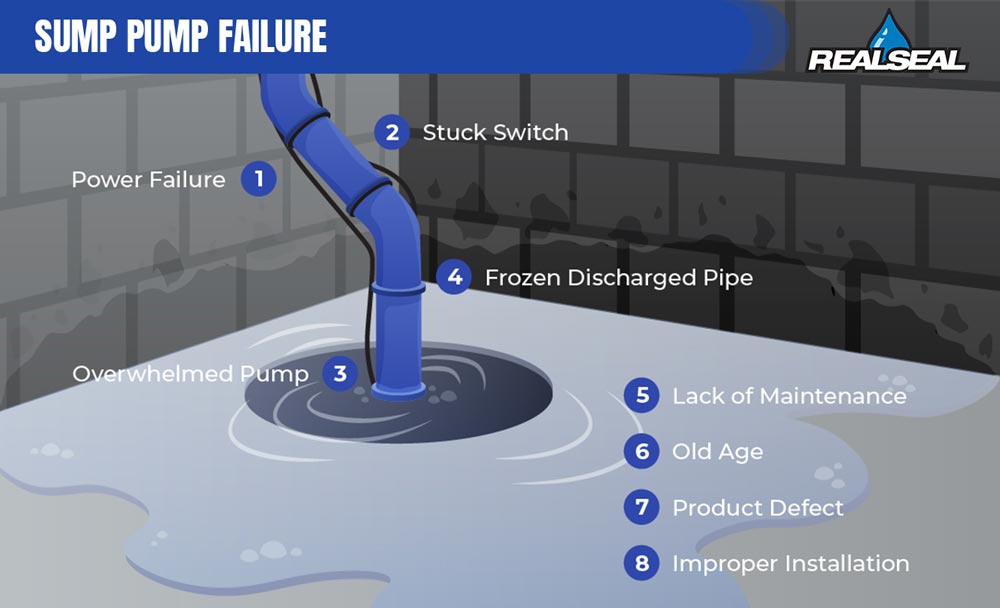
Another common cause of sump pump failure is a malfunctioning switch, float, or sensor. These switches and sensors are designed to turn the sump pump on and off when the water level rises or falls. If they malfunction, they will not be able to detect the water level, causing the pump to turn on or off at the wrong times–or not at all.
Additionally, the sump pump’s age is an important consideration to bear in mind. As with all mechanical devices, sump pumps deteriorate over time, decreasing their performance. After 5-7 years of operation, the sump pump’s efficiency can drop significantly, and it is recommended to replace it with a newer, more reliable model.
Do I Need a Battery Backup for My Sump Pump?
Power outages are a common occurrence during severe weather conditions or natural disasters. They can leave your sump pump without electricity and render it useless, leading to extensive property damage and health hazards.
To avoid such situations, it is highly recommended to invest in a battery backup for your sump pump. A battery backup system acts as a fail-safe mechanism and ensures that your pump continues functioning even when there is no power supply. This gives you peace of mind and helps protect your property from water damage in case of a power outage. It is also important to note that battery backups are particularly useful for those living in areas that are prone to frequent power outages or that have a weak electrical grid.
When it comes to choosing the right battery backup for your sump pump, it is important to consider factors such as the capacity of the battery, the runtime of the backup, and the reliability of the system. Make sure to consult with a professional who can help you select the right backup that is compatible with your sump pump and meets your specific requirements.
Signs That It’s Time to Replace Your Sump Pump
Like any mechanical device, a sump pump may experience issues as it ages, leading to a need for replacement. Here are some common signs that it’s time to replace a sump pump.
- You hear strange noises – If your sump pump is making strange noises, such as grinding or squealing, this could indicate that the motor is failing and needs to be replaced.
- The sump pump is running continuously – If the pump has been running continuously and failing to shut off, this could be a sign that the switch is broken and needs replacing.
- The pump is over 5-7 years old – If the pump is more than 5-7 years old, it may be wise to replace it (even if it seems to be functioning correctly), as the parts may begin to wear out and become less reliable.
Other indicators that it’s time to replace a sump pump can include signs of flooding or excess moisture in the basement, as well as rust, corrosion, or cracks in the pump housing or discharge pipe. These issues could indicate that the pump is failing to do its job correctly and will require replacement in order to prevent further damage to the home.
Do I Really Need a Sump Pump?
If you live in an area that is prone to heavy rainfall or flooding, a sump pump is an essential investment for protecting your home. It is like a seat belt or other safety system, but for your basement. You don’t always need it, but when you do, you NEED it.
Other Ways to Help Keep a Basement or Crawl Space Dry
There are several other preventative measures homeowners can take to keep their crawl space or basement dry and avoid foundation issues. These include:
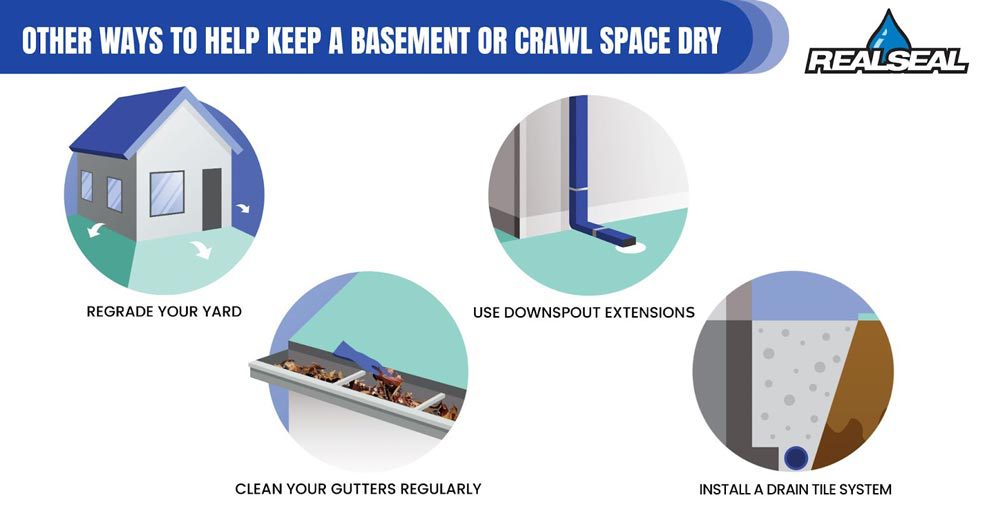
- Regrade your yard, if necessary – This process ensures that the ground around your home slopes away from the foundation. This will prevent groundwater from draining toward the foundation. You can hire a landscaping company to handle this process, or you can do it yourself using a rake, shovel, and other necessary tools.
- Install downspout extensions – Downspout extensions direct water away from the foundation and help prevent soil erosion and foundation damage. You can purchase extensions at any hardware store or home improvement retailer and install them in just a few easy steps.
- Clean gutters regularly – Clogged gutters can overflow and cause water to collect around the foundation, leading to moisture-related problems. Homeowners should clear their gutters of leaves and debris at least twice a year (or more, if necessary) to ensure that water is able to flow freely.
- Install a drain tile system – Drain tile systems are designed to direct water away from the foundation, preventing moisture from collecting and damaging it. A professional contractor can install this type of system, and it can be an effective way to protect a home’s foundation from damage.
If you think your Chicagoland basement or crawl space might require a sump pump, contact The Real Seal today to schedule a free evaluation.
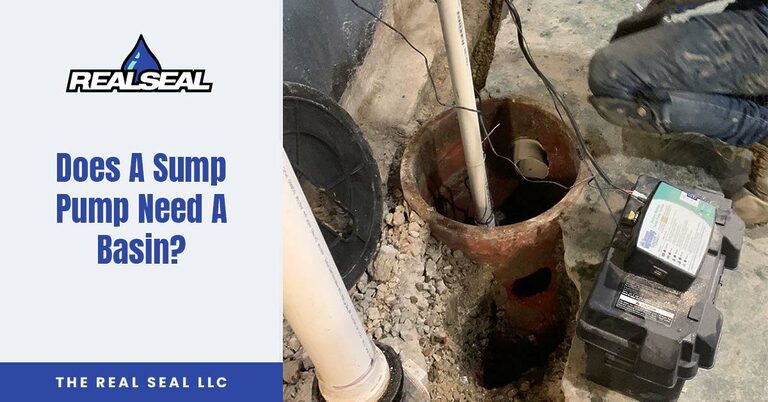
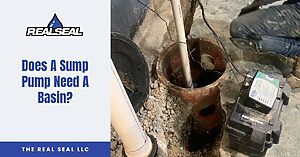





2 Responses
Well done but you need to address high water table level but not high enough to flood basement. If the water is just below the slab but doesn’t rise higher unless heavy rain. The pump will run none stop in till the water table lower causing protiential pump burn out. Just food for thought.
Hi David,
Great observation! Some basements do sit just above a high water table. Unfortunately, it is not a better option to forgo a sump pump just because it will work harder in this situation. In fact, it is even more important than ever to have a sump pump in your basement when there is a high water table beneath. Yes, you will have to monitor the pump. Yes, just like anything else, the more you use it, the faster it wears out. This would be a case where a monitoring system attached to a battery backup sump pump will pay dividends by alerting you when the pump is nearing the end of its life so you can replace it.